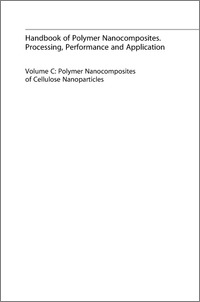Sarker, Md. Zaidul Islam
(2015)
Cellulosic nanocomposites from natural fibers for medical applications: a review.
In:
Handbook of Polymer Nanocomposites. Processing, Performance and Application: Volume C: Polymer Nanocomposites of Cellulose Nanoparticles.
Springer Berlin Heidelberg, NewYork, pp. 475-511.
ISBN 978-3-642-45231-4 (P), 978-3-642-45232-1 (O)
![[img]](http://irep.iium.edu.my/style/images/fileicons/application_pdf.png)  Preview |
|
PDF ( Cellulosic nanocomposites from natural fibers for medical applications: a review)
Download (1MB)
| Preview
|
Abstract
The nanocellulose and its composites have been covered in this chapter which is confirmed to be a very versatile material having the wide range of medical applications, including cardiovascular implants, scaffolds for tissue engineering, repair of articular cartilage, vascular grafts, urethral catheters, mammary prostheses, penile prostheses, adhesion barriers, and artificial skin. These implants were produced from bioresorbable and/or biodegradable materials.
Nanocellulose, such as that produced other than microfibrillated cellulose and cellulose nanowhiskers, is also produced by the bacteria (bacterial cellulose, BC) which is also an emerging biomaterial with great potential as a biological implant, wound and burn dressing material, and scaffolds for tissue regeneration. Moreover, the nanostructure and morphological similarities with collagen make cellulose attractive for cell immobilization and cell support. This article describes current and future applications of cellulosic nanofibers in the biomedical field.
Cellulose micro-/nanofibril as a reinforcing material for composites is becoming more and more attractive to researchers in composite science because of its potential lightweight and high strength. In the present article, we have reviewed the nanocellulosic fibers-based nanocomposites for medical applications. Processing methods, properties, and various applications of cellulosic composites are also discussed in this article. However, the separation of cellulose nanofibers along with the manufacture of cellulose nanocomposites is still challengeable. The aim of this chapter is to demonstrate the current state of development in the field of cellulose nanofibril-based nanocomposite research and application through examples.
Actions (login required)
 |
View Item |


 Download Statistics
Download Statistics Download Statistics
Download Statistics